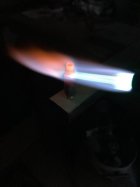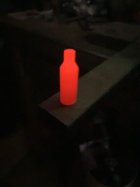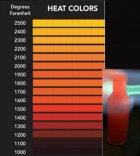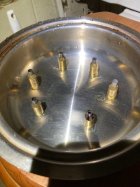This is what I use, with a "turbo torch" for lack of a better term. It uses a venturi to draw combustion air into the propane stream, made by Bernzomatic I think.
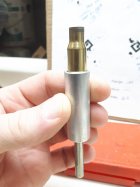
I like fast heat because I get quicker, more localized heating of the neck and shoulder and it has less time to migrate toward the base of the case.
I machined the holder from a piece of aluminum round bar, pressed a piece of steel 1/4" round bar into the base to fit the drill. The aluminum holder shields the rest of the case from the flame, which is aimed at the neck of the case at an angle of about 45 degrees so it isn't directed into the case.
Aluminum sheds heat very quickly, steel stays hot much longer.
I anneal in a dark room. When I can see dull red on the case neck, the cases get dumped into an old aluminum cake pan to cool.
Other than counting slowly to myself (I'm OCD, and everything is about counting I guess), I don't use time as an indicator of whether something is annealed or not.
The flame temp varies a bit from session to session, and each brand of brass is different too, it seems, so time isn't a reliable indicator in my opinion. I go strictly by colour of the brass.
I anneal at every firing, have for several years now. Brass life is good, accuracy is good.
I think Hornady used to make a set of these things that they sold.

I like fast heat because I get quicker, more localized heating of the neck and shoulder and it has less time to migrate toward the base of the case.
I machined the holder from a piece of aluminum round bar, pressed a piece of steel 1/4" round bar into the base to fit the drill. The aluminum holder shields the rest of the case from the flame, which is aimed at the neck of the case at an angle of about 45 degrees so it isn't directed into the case.
Aluminum sheds heat very quickly, steel stays hot much longer.
I anneal in a dark room. When I can see dull red on the case neck, the cases get dumped into an old aluminum cake pan to cool.
Other than counting slowly to myself (I'm OCD, and everything is about counting I guess), I don't use time as an indicator of whether something is annealed or not.
The flame temp varies a bit from session to session, and each brand of brass is different too, it seems, so time isn't a reliable indicator in my opinion. I go strictly by colour of the brass.
I anneal at every firing, have for several years now. Brass life is good, accuracy is good.
I think Hornady used to make a set of these things that they sold.
Last edited:













